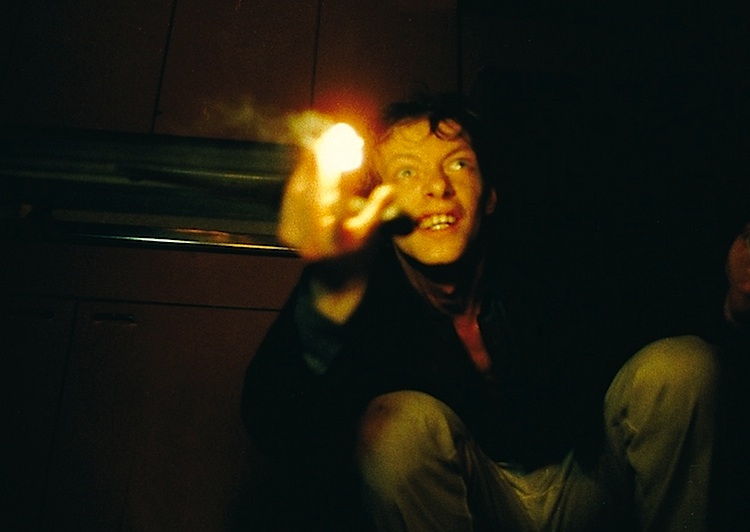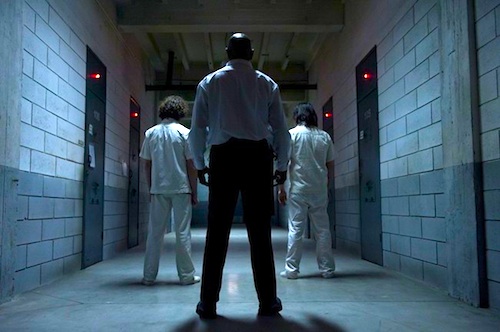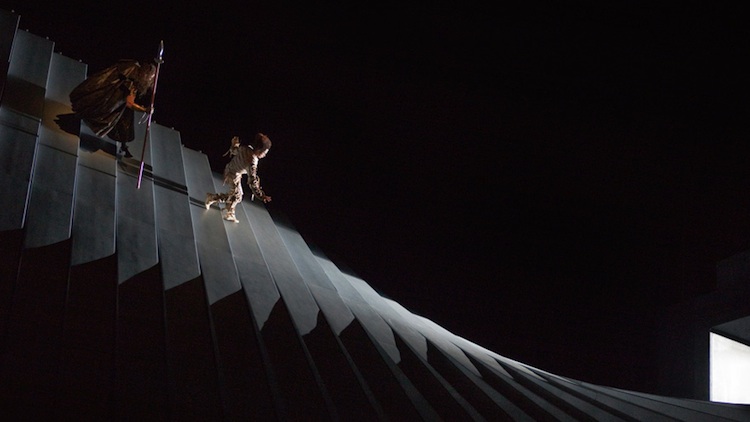By Joe Bendel. Never dismiss the characters of Hirokazu Kore-eda’s latest film just because they are elementary school children. Unlike the parade of hipster man-children audiences see in indie after indie, many of these youngsters will amount to something in life. They are also facing some very real drama at a relatively early age in Kore-eda’s unusually wise and gentle I Wish, which opens this Friday in New York.
When their parents split up, Koichi decided to go with his mother to live with his grandparents in Southern Kyushu. His younger brother Ryunosuke opted to stay with their irresponsible garage-rocker father in the north. Always close, it is a difficult separation for the brothers, but they think their respective parents need them more. Still, it seems to weigh more heavily on Koichi, troubled to find himself not regularly fulfilling his duties as a big brother.
 Koichi sees potential deliverance in the imminent opening of the new bullet train linking north and south Kyushu (completed in a mere fraction of the time needed for the still unfinished Second Avenue subway). Word has it that anyone standing on the exact spot where the maiden north and south bound trains cross will have their wish granted. Koichi convinces Ryunosuke to meet him there so they can both wish for their family to be reunited. (Finally, a real world application for those “two trains” math problems.) Of course, it is easier said than done. Arranging train tickets and school absences without the knowledge or consent of their parents will require caper-like planning.
Koichi sees potential deliverance in the imminent opening of the new bullet train linking north and south Kyushu (completed in a mere fraction of the time needed for the still unfinished Second Avenue subway). Word has it that anyone standing on the exact spot where the maiden north and south bound trains cross will have their wish granted. Koichi convinces Ryunosuke to meet him there so they can both wish for their family to be reunited. (Finally, a real world application for those “two trains” math problems.) Of course, it is easier said than done. Arranging train tickets and school absences without the knowledge or consent of their parents will require caper-like planning.
As a result, both brothers bring along their co-conspirator friends, each of whom has a wish of their own. The way Kore-eda draws out their distinct personalities and captures their subtle interaction is a joy to behold. Likening Kore-eda to Ozu is a danger critics often succumb to, but I Wish particularly lends itself to such comparisons. He coaxes some remarkably rich and grounded performances from his youthful cast, placing them in situations of conflict with one another, but harboring malice for none.
Real life brother-performers Koki and Ohshiro Maeda clearly had an intuitive sense of how to distill the essence of their own fraternal relationship and infuse it into their on-screen roles. They are smart, resourceful, and sensitive, but never in an overly cloying way. Frankly, I Wish has a wealth of talented young actors, including the particularly noteworthy Kyara Uchida as Megumi, one of the older girls Ryunosuke befriends (remember, his dad is in a band). If, like her character, her driving ambition is to become an actress, she should be well on her way to a brilliant career.
As with Still Walking, Kore-eda’s last film to have significant American distribution, I Wish depicts serious family issues with a remarkably light touch, but it is the spirit of forgiveness and the acceptance of fate that make the films so special. Yet, the earnest young cast represents a potentially far greater crossover appeal for I Wish. Highly recommended, it opens this Friday (5/11) in New York at the Lincoln Plaza and Angelika Film Center.
LFM GRADE: A
Posted on May 8th, 2012 at 12:27pm.




